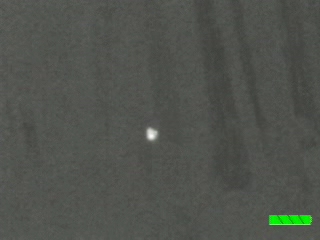
|
||||||||||||||||||
|
|
||||||||||||||||||
|
| ||||||||||||||||||
  
      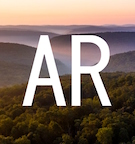     | ||||||||||||||||||
BFRO Thermal Imaging
|
Since the summer of 2006 the BFRO has been acquiring various
high-tech optical devices which extend visual perception in darkness.
These technologies are provided by the chief sponsor of the BFRO -- multimillionaire
Wally
Hersom in Nevada. |
|||
|
NOTE: The images below were originally (when first posted on this page) linked to downloadable video files. The links have been disabled for the time being due to the excessive bandwidth drain caused by these large files. We still have these video files, of course, and can provide the links to anyone who has a need or desire to see them. |
|||
| Madison County, North Carolina, September 2006 Deer walks by and shows no reaction to the surveillance system. The surveillance system was not de-scented in any way. Stationary setup: L-3 Comm. Handheld Thermal-Eye; connected to Mini-DVR; each powered by a lead-acid, 12-volt alarm battery. |
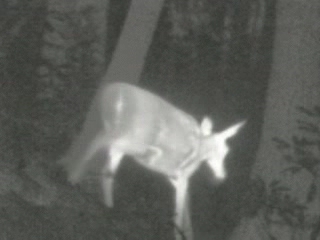 Deer Walks By (4 MB) |
||
Orange County, California, August 2006 Raccoon on Wally trail. This is an uncut clip. It demonstrated the delayed triggering on the motion-activated DVR. This is why we use both a motion-activated DVR and a continuous-recording DVR, so as not to miss anything. Stationary setup: L-3 Comm. Handheld Thermal-Eye; connected to Motion-activated Mini-DVR; powered by a lead-acid, 12-volt alarm battery. |
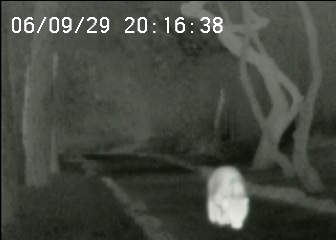 Raccoon Delayed Trigger (1.5 MB) |
||
Pocahontas County, West Virginia, October 2006 Surveillance camera at the Portage camp. The lateral motion of the rabbit across the screen is what caused the pixel-change-motion-detection-system to be triggered. The raccoon above only triggered the camera once it was close enough to the camera to show the lateral motion on the screen. There was not enough lateral motion to trigger the system when the raccoon was further down the trail. Stationary setup: L-3 Comm. Handheld Thermal-Eye; connected to Mini-DVR; each powered by a lead-acid, 12-volt alarm battery. |
Rabbit Trips Motion Detector (2 MB)
|
||
| Del Norte County, California, November 2006 California State Park Ranger Robert Leiterman wearing the helmet-cam thermal system developed by Ernest Fehr. Leiterman spots a black bear leaning against a tree and peeking out from behind it to look at the expeditioners. Helmet-mounted L-3 Comm. Handheld Thermal-Eye; connected to Mini-DVR; powered by a NM-hydride, 12-volt pack (D cells). |
Black Bear Peeks Out (15 MB) |
||
| Price County, Wisconsin, June 2006 Either a coyote or a wolf. During this expedition the Wisconsin DNR had hired hunters to kill some nuisance wolves in this area. This may be one of those wolves. Stationary setup with a Raytheon 250D thermal imager connected to Mini-DVR; cam powered by a single 90 amp-hour deep cycle marine battery. |
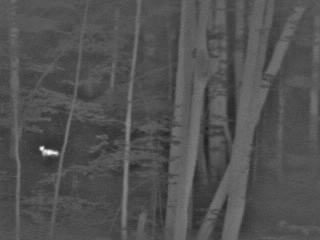 Coyote or Wolf (3 MB) |
||
|
Helmet-mounted handheld L-3 Comm. Thermal-Eye; connected to Mini-DVR; powered by a NM-hydride, 12-volt pack (D cells). |
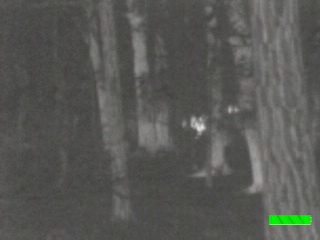 Cow Among Trees (13 MB) |
||
Price County, Wisconsin, June 2006 Partially clothed people at the "Green Gate" camp. In the video, left to right, Don Young, Don's girlfriend, Dave Johnson, and Luke Molloy. Don is wearing a sleeveless shirt. His girlfriend is wearing tight jeans and a strapless tank top. Luke is getting dressed behind the vehicle and is not wearing a shirt. Notice the detail pattern created by clothing. Stationary setup with a Raytheon 250D thermal imager connected to Mini-DVR; cam powered by a single 90 amp-hour deep cycle marine battery. |
 Partially Clothed People (9MB) |
||

